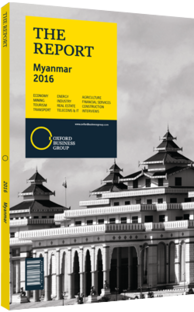Reviving rice production and export in Myanmar
Investment in Myanmar’s agriculture sector is beginning to see gradual results. Indeed, Myanmar is on track to double its exports of rice by 2020, increasing production from under 2m tonnes per year to over 4m tonnes. This level of overseas sales has not been achieved in 70 years, and hitting the target would indicate Myanmar’s return as a major player in the international rice markets. According to the World Bank, the country must first take a few important steps to achieve this goal. It must diversify production, open its milling industry to foreign investment and reduce the costs and complications of export. If successful, the bank estimates that many of the most vulnerable people in Myanmar will have a chance to rise from extreme poverty.
Glory Days
In pre-colonial times, the king prohibited the export of rice, while the local price was too low for farmers to focus on the crop. Intense cultivation began under the British, who brought in capital and labour and introduced a favourable land tenure system. The British also improved transport, resulting in a boom in production. From 1870 to 1915, total output rose from 1.5m tonnes to 7m tonnes. Production stagnated through the Second World War, and fell back to under 2m tonnes per year during Japanese occupation. However, after independence in 1948 production increased rapidly, again hitting 7m tonnes per year by 1965.
Exports always played a large role; by 1940, 71% of production was sold overseas. Much of Myanmar’s production went to war-torn countries in the region that faced food shortages. But as neighbours regained their ability to produce rice domestically, Myanmar’s exports dropped, falling to 51% of total production by 1957 and to 39% by 1960, though Myanmar remained the world’s largest exporter of rice in the early 1960s.
With the onset of political instability, the total area cultivated in Myanmar began to stagnate from the 1960s through the 1980s. However, at the same time, total output rose dramatically. Rice production jumped from about 6m tonnes a year to 14m tonnes in 1985, and continued to climb, hitting a high of 32.7m tonnes in 2009, all the while exports remained low. Exports fell steadily from 3.1m tonnes in 1940 to 1.7m tonnes in 1960, to a low of 28,300 tonnes in 1997 (0.17% of production).
The Comeback
Myanmar’s current government aims to reignite the industry, with the goal of returning to former rice production and export highs. In late 2012, it set an export target of 3m tonnes a year by 2017, and 4m tonnes by 2020. Exports have been picking up, and it seems that the country is on the way to hitting its goal. During the fiscal year ending March 2015, total exports hit 1.7m tonnes, up 40% year-on-year. It is expected that the country will break the 2m tonne mark in 2015/16. If this mark is achieved, the year will be the highest level of exports for the country in volume terms since about 1940.
Many factors are at work in the export equation. Myanmar faces strong competition from nations that are more productive in terms of output. While in 2013 Myanmar produced about 2.65 tonnes per ha, Malaysia was at 3.82, the Philippines at 3.72 and Vietnam at 5.9. Furthermore, according to the World Bank, Myanmar’s milling equipment is out-dated and inefficient, experiencing 15-20% loss, while port infrastructure is poor and policy uncertainty remains. The quality of output is also low, and the country is limited to markets with lower standards.
Nevertheless, positive gains have continued. Europe opened to Myanmar rice under a recent agreement following the lifting of economic sanction, and China is becoming a bigger buyer. While China officially banned rice imports from Myanmar, much still comes across the border defying the ban, while trade is slowly moving to more official transactions.
You have reached the limit of premium articles you can view for free.
Choose from the options below to purchase print or digital editions of our Reports. You can also purchase a website subscription giving you unlimited access to all of our Reports online for 12 months.
If you have already purchased this Report or have a website subscription, please login to continue.

